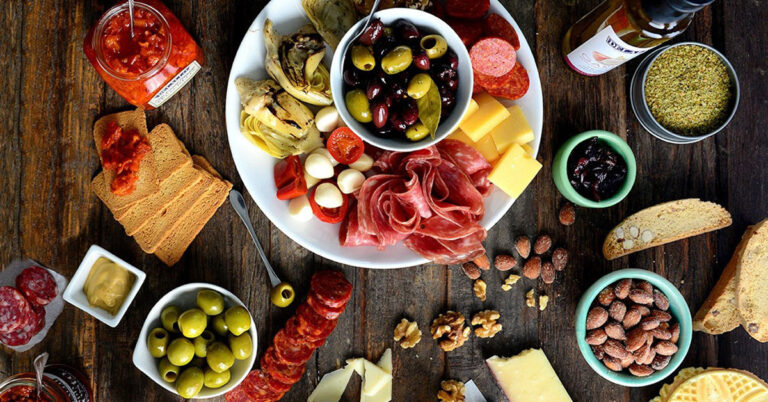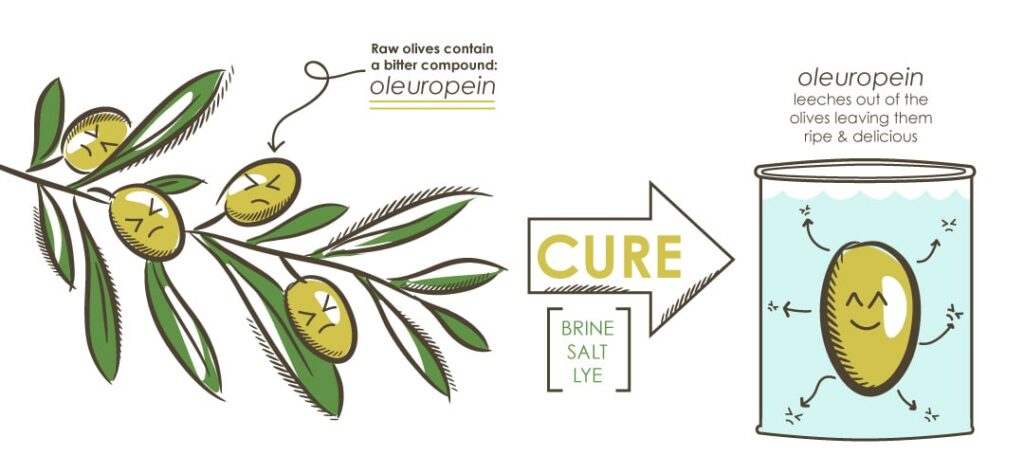
Olives are adored in food culture. Their history is so extensive in the Mediterranean that to an Italian, it’s almost as if an olive tree is a treasure box and the olives are the gold inside. They come in a wide variety of colors, tastes, styles, and curing methods, making them one of the more versatile fruits. In the Mediterranean, olive trees are seen as a symbol of peace and victory, while bringing about feelings of harmony, vitality, and health. Olive trees were first grown before language was invented, and they are one of the oldest cultivated trees.
Olives come from all over the world, in an array of different varieties. They get their features from a number of different factors, including their environment and time of harvest. From green Italian Castelvetrano to the tangy Greek Calamata, these fruits are as complex as they are plentiful! There are hundreds or different types of olives around the world, each with their own unique characteristics, including, color, size, shape, and most importantly flavor. When it comes to color, the exact moment an olive is harvested makes the difference. Green olives are younger, while black olives are ripened. The maturity level of an olive affects its texture and taste.
Ultimately, it’s the curing style that gives each olive its distinct taste. You can cure the same olive two different ways and create two very distinct experiences. But what does it mean to be cured? Good question! Raw olives contain oleuropein a bitter compound, through the curing process, oleuropein is leaked out of the olive making them ripe and ready to eat. There are three different types of cures: Natural Brine Cure, Salt Cure and Lye Cure.

Natural Brine Cure: A natural process where ripened olives are fermented in salt water. This method takes multiple months to complete, but the result is a very tasty olive, and because of the results this technique is preferred among most olive experts.
Dry or Salt Cure: An intense method where olives are packed in salt to remove the bitterness and moisture, resulting in a dried-out, wrinkly fruit, with a deep and concentrated flavor. These olives are often packed in oil, giving them a plump and juicy bite.
Lye Cure: Lye, also known as caustic soda, is a curing agent used to speed up the curing process. Rather than months, Lye can complete the process in just a matter of days or weeks. The process is followed by a thorough rinsing. The downside of a Lye Cure is often a more dull olive.
With the tremendous amount of olive varieties available there is something for everyone! Try them for yourself and find your new favorite. We recommend starting your search with the wide range of olives available at your local store. And for some olive-spiration check out the recipes on our All About Olives Pinterest Board!
